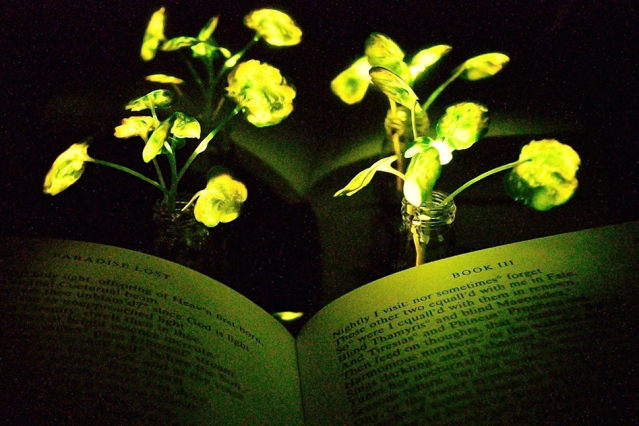
In movies, you might have seen children playing with fireflies or fairies leaving pixie dust. Seems directly from dreams, isn't it? But not anymore, as the engineers from the Massachusetts Institute of Technology (MIT) have made the magic become reality by using plants.
MIT, which is a private research university in Cambridge and one of the top technology universities in the world, has posted the news about their new project, which was funded by the U.S. Department of Energy.
Also read: Oldest living shark, born in 1500s, discovered in North Atlantic Ocean
The inventors of this unique light source have used a watercress plant, which will work as a desk lamp or dim light. The luminous properties can be achieved by embedding specialized nanoparticles into the leaves, which can glow for nearly four hours.
The engineers are working on further development in this process and are aiming to make these plants bright enough to provide light to a workspace.
According to MIT reports, Michael Strano, the Carbon P. Dubbs Professor of Chemical Engineering at MIT and the senior author of the study said, "The vision is to make a plant that will function as a desk lamp — a lamp that you don't have to plug in. The light is ultimately powered by the energy metabolism of the plant itself."
The main objective of this research project is to provide low-intensity indoor lighting, including transforming trees into self-powered streetlight to reduce the use of energy every day. The main author of this study and the postdoctoral from MIT, Seon-Yeong Kwak published the study research in Nano Letters.
Researchers have used an enzyme called luciferase which makes fireflies glow and another molecule called luciferin to create the light. After embedding both into the plants, particles start to release the luciferin into the cells and on the other hand, luciferase interacts with the chemical to create the glow.
This is not the first time that MIT did something miraculous, earlier also the top-most technology institution did some revolutionary high-tech plant research. They transformed spinach into a sensor, which can detect explosives and relay that information to a device, which works like a smartphone, wirelessly. This project was named as "plant nanobionics."
Later in November 2017, MIT engineers had created a plant sensor, which will reveal when a plant needs water. This technology aims towards farming mostly, as their core objective was to save houseplant as well as to provide an early warning to the farmers when their crops are experiencing a water shortage.









